The Houghton campus sits empty several weeks
from the end of the spring semester. A pandemic viral respiratory illness,
coronavirus disease 2019 (also known as 2019 novel coronavirus and abbreviated
as COVID-19), has led to school and business closures across the U.S. and
travel restrictions around the world.
Houghton students, faculty and staff are aware
at this point how changing circumstances and rules have resulted in their
seclusion away from the main campus. All instruction, as well as a variety of support
services and student engagement opportunities, have moved to online formats.
Here is the timeline of key events in New York State and within the Houghton
community:
February 1, 2020: Houghton College publishes a
Frequently Asked Questions page to address concerns about planned response to
the novel coronavirus, of which no cases had been reported in New York State.1
February 27, 2020: First meeting of Houghton’s
Emergency Management Team.2
February 28, 2020: The Emergency Management
Team emailed faculty to inform them that over February break (February 29 to
March 8), they should begin considering how they might transition to online
instruction.2
March 1, 2020: First case of COVID-19 in New
York City confirmed by Governor Andrew Cuomo.3
March 4, 2020: Nine people who were in contact
with one infected Westchester County, NY attorney test positive for the virus.3
March 6, 2020: Cuomo announces that 4,000
people across New York State are in “precautionary quarantine” (healthy people
who recently traveled through affected countries), as well as “dozens” in
mandatory isolation.3
March 9, 2020: Following Houghton’s February
break, students who traveled to countries with a CDC3 rating (at that time,
China, Italy, Iran, and South Korea) self-isolated away from main campus
residences. The recommended quarantine period was 14 days.4
March 12, 2020: Cuomo bans all gatherings of
500 people or more, and says that facilities below a 500-person seated capacity
should reduce occupancy by 50%.3
Houghton’s Emergency Management Team makes the
decision to bring home all students studying abroad.2
March 13, 2020: On Friday morning, an email
from Dean of Students Marc Smithers is sent with an attached letter from
President Shirley Mullen, announcing that Houghton would be moving to
online-only instruction starting Monday, March 23. All chapels are cancelled
(as gatherings of over 500 people). The plan at this time is to have regularly
scheduled classes March 16 through March 18, with students required to move out
of college residences by noon on Thursday, March 19. All college-sponsored
international travel, including Mayterms, is suspended through at least July 1,
2020.5
March 15, 2020: On Sunday evening, two
Houghton students enter self-isolation– one who developed a cough after
traveling internationally during February break, and that student’s roommate as
a precaution. The ill student was tested for COVID-19.6
March 16, 2020: Early Monday morning, an email
from President Mullen announces that all classes are cancelled due to
infections in Allegany County and the one ill student being tested.7
Over the following few days, further emails urge students to leave campus as
quickly as they can, while residence halls and dining services remain open for
students unable to leave earlier than Thursday, March 19.
Cuomo, in coordination with CT and NJ
governors Murphy and Lamont, orders restaurants to close except for take-out
and delivery, and all gatherings over 50 people banned until further notice.3
March 17, 2020: College housing past March 19
is opened to some students: international students unable to travel to their
home countries, students whose homes include people at high risk for
coronavirus, and students whose home situations are “disruptive to their
flourishing.”8
March 18, 2020: With 3,437 confirmed cases in
New York State, Cuomo orders non-essential businesses to have at least 50% of
employees work from home.3
March 20, 2020: An email from Marc Smithers
and Dale Wright announces that room and board costs for the spring semester
will be prorated; the costs of services not received will be credited to the
accounts of returning students as discounts on next year’s charges.9
New York State reports 8,300 COVID-19 cases
and 53 deaths.3
March 22, 2020: By 8pm on Sunday, all
non-essential businesses in New York State are ordered to close.10
Non-essential gatherings “of any size for any reason” are banned.11
In response to these restrictions, Houghton
professors move out of their offices to work from home.2
New York State caseload reaches 16,278 (10,764
of these in New York City).3
March 23, 2020: On Monday, all classes resume
in fully online formats.
For the time being, approximately ten students
remain in college housing and continue receiving food from Metz, under the
special provisions described on March 17. (This does not include any students
being quarantined due to possible COVID-19 exposure.)2
March 25, 2020: An email from Betsy Sanford
announces that New York State restrictions on gatherings over 50 people,
lasting into May 2020, will prevent the Houghton College community from
gathering in person for commencement and other end-of-year ceremonies. Virtual
ceremonies on the previously planned dates are promised to celebrate class of
2020 graduates, the reunion class of 1970, senior student athletes, Hall of
Honor athletes, and faculty and staff retirees. In-person celebrations will be
rescheduled to other dates.12
March 26, 2020: New York State’s number of
confirmed COVID-19 cases reaches 37,258 (21,393 in New York City).13
All four Houghton students who were being
tested for COVID-19 receive negative results.14
- All-campus email from Marc Smithers: “Important: Response Plan and Frequently Asked Questions Concerning the Coronavirus.” February 1, 2020, 9:11pm.
- Emails from Marc Smithers to the STAR, March 25-27, 2020.
- NBCNewYork.com, https://www.nbcnewyork.com/news/local/timeline-tracking-the-spread-of-covid-19-in-tri-state/2313123/ (accessed March 26, 2020).
- All-campus email from Marc Smithers: “Important: Ongoing College Response to COVID-19.” March 9, 2020, 8:54am.
- All-campus email from Marc Smithers: “Letter from President Mullen Concerning COVID-19 | Student Q&A at 11am and 12pm.” March 13, 2020, 9:10am.
- All-campus email from Marc Smithers: “Further Information for Students, Staff, and Faculty Regarding COVID-19.” March 15, 2020, 9:59pm.
- All-campus email from Shirley Mullen: “Updated memo to the community.” March 16, 2020, 7:44am.
- All-campus email from Shirley Mullen: “Next Steps in our COVID-19 Journey.” March 17, 2020, 7:49am.
- All-campus email from Marc Smithers: “Important Information Regarding Pro-Rated Room and Board Credits.” March 20, 2020, 5:16pm.
- News12.com, http://www.news12.com/story/41924579/restrictions-on-gatherings-businesses-take-effect-as-ny-cases-surge-past-15000 (accessed March 26, 2020).
- NYC Health, https://www1.nyc.gov/site/doh/covid/covid-19-main.page (accessed March 26, 2020).
- All-campus email from Betsy Sanford: “Memo from President Mullen.” March 25, 2020, 10:16am.
- New York Magazine, https://nymag.com/intelligencer/2020/03/new-york-coronavirus-cases-updates.html (accessed March 26, 2020).
- All-campus email from Marc Smithers: “Final Update on COVID-19 Test Results.” March 26, 2020, 10:50am.

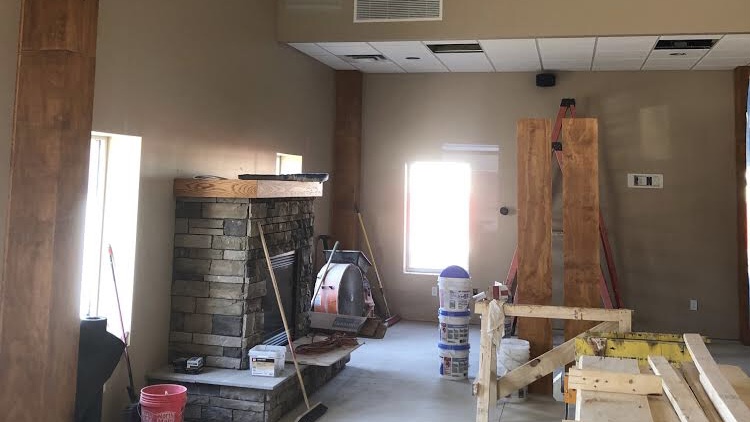
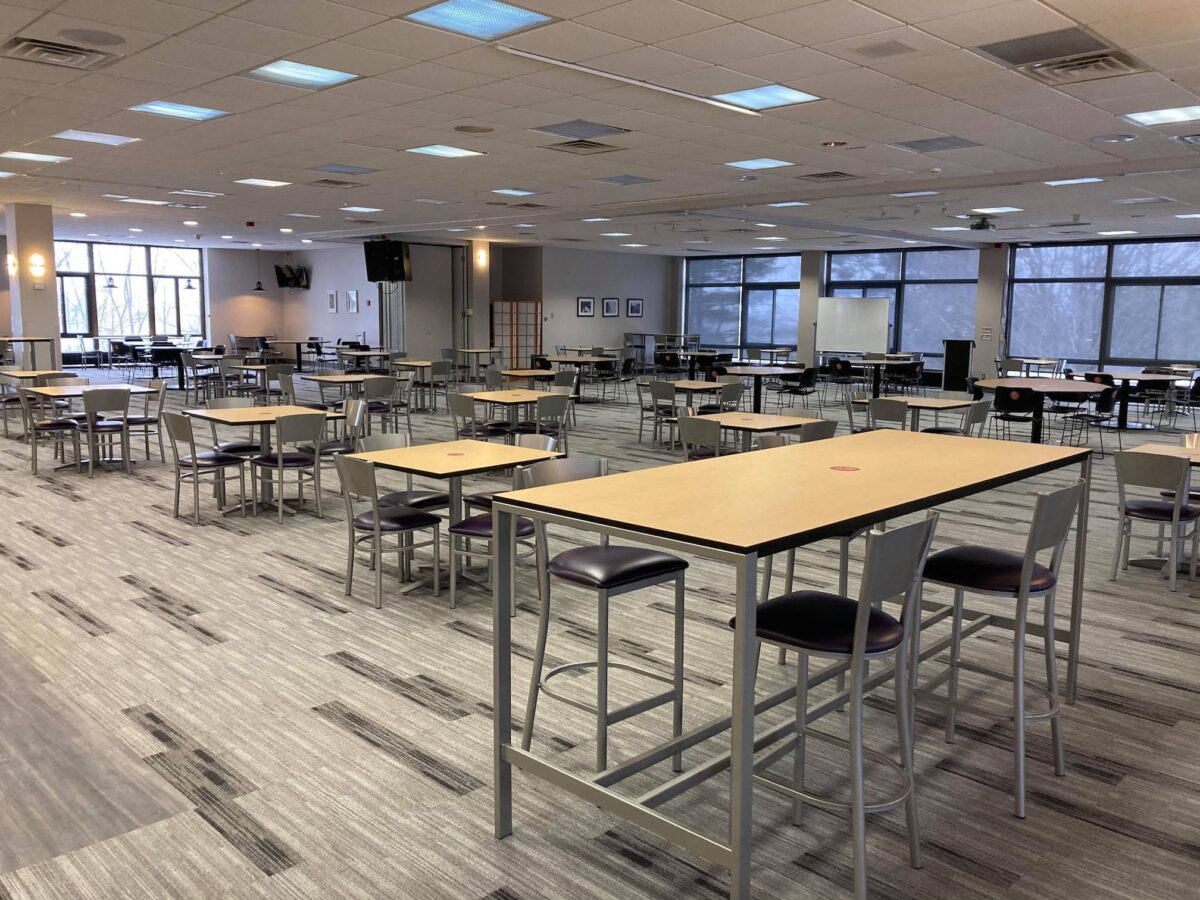
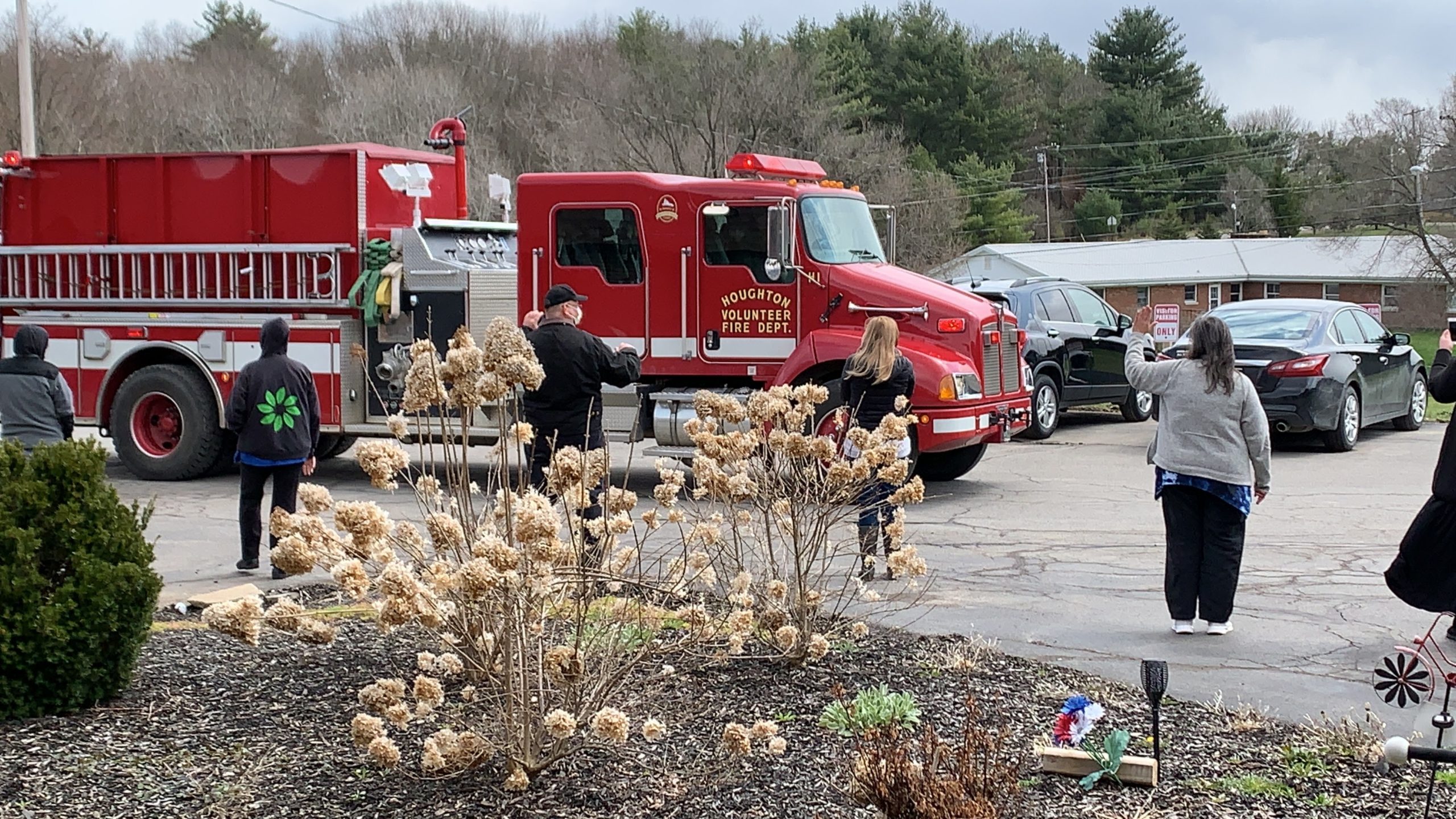

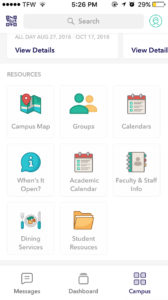 Jared Hobson, a junior majoring in Communication, lead the creation of the app over the summer. Hobson’s initial team – including Elliot Spicer, Mallory Moore, Lauren Couturier, Olivia Flint, and Katharine Meyer (all currently juniors) – conceived the project during VOCA’s Sophomore Leadership conference in February 2018.c. “When we were creating the app we really just wanted it to be a resource for students especially to be able to be more connected on campus,” Hobson says.
Jared Hobson, a junior majoring in Communication, lead the creation of the app over the summer. Hobson’s initial team – including Elliot Spicer, Mallory Moore, Lauren Couturier, Olivia Flint, and Katharine Meyer (all currently juniors) – conceived the project during VOCA’s Sophomore Leadership conference in February 2018.c. “When we were creating the app we really just wanted it to be a resource for students especially to be able to be more connected on campus,” Hobson says.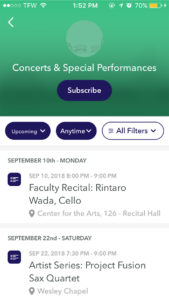 Despite the praise, portions of the app have yet to reach the full potential envisioned by its creators. While the app includes the ability to create grou
Despite the praise, portions of the app have yet to reach the full potential envisioned by its creators. While the app includes the ability to create grou